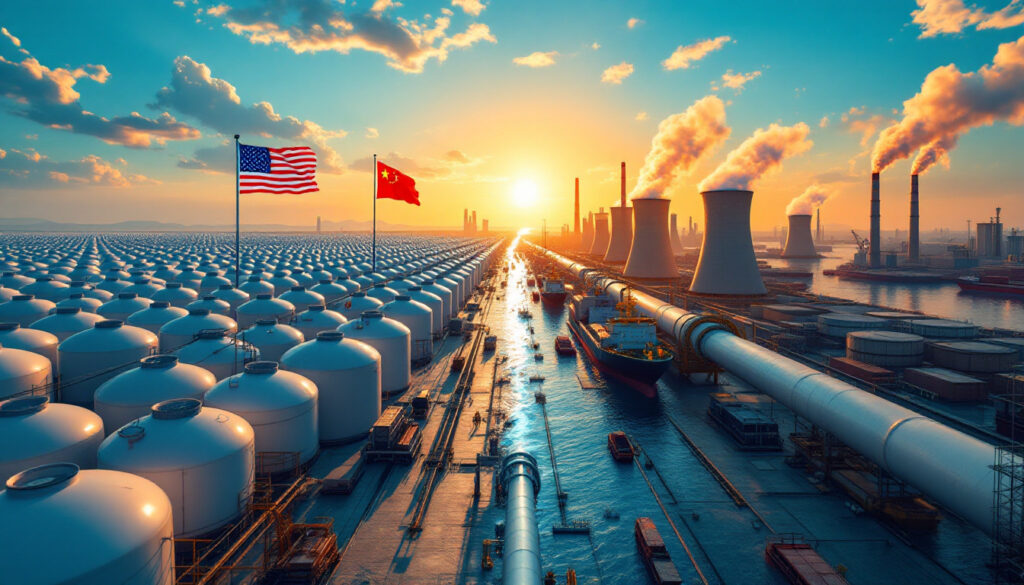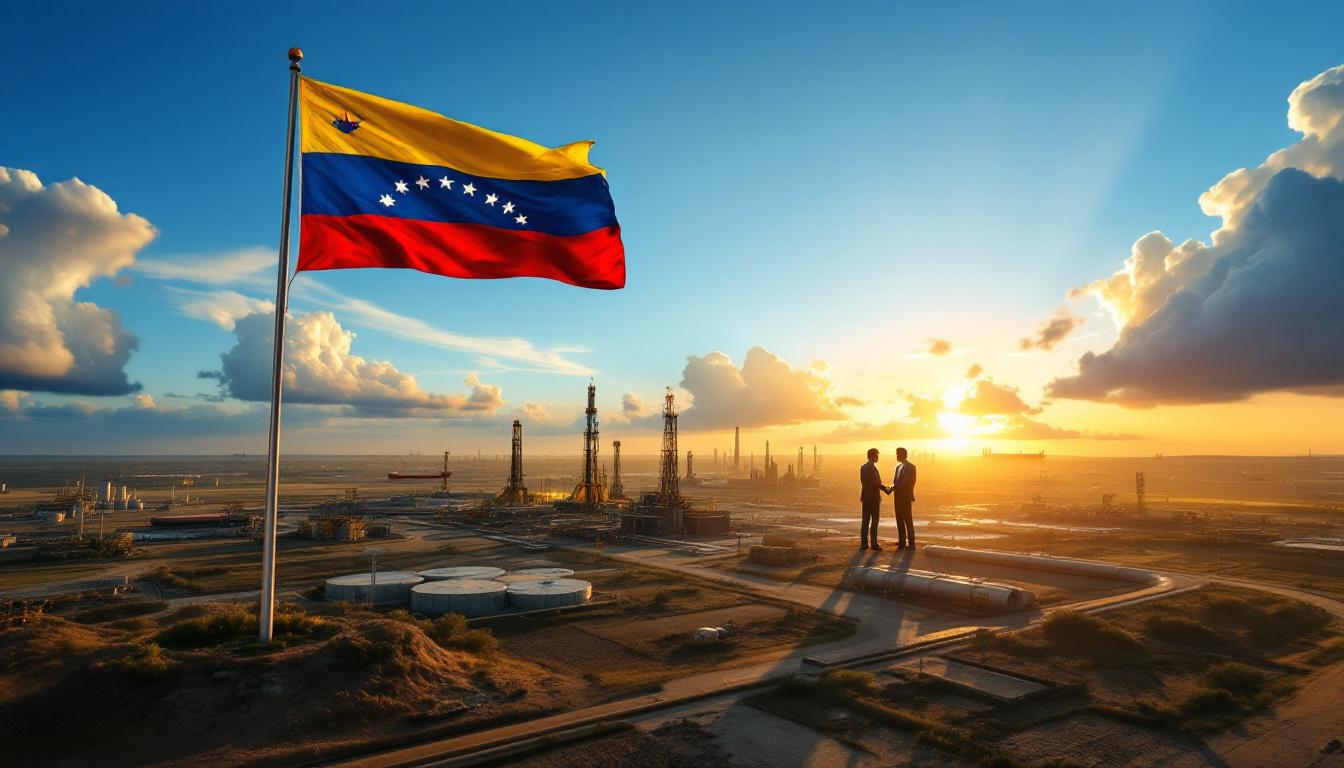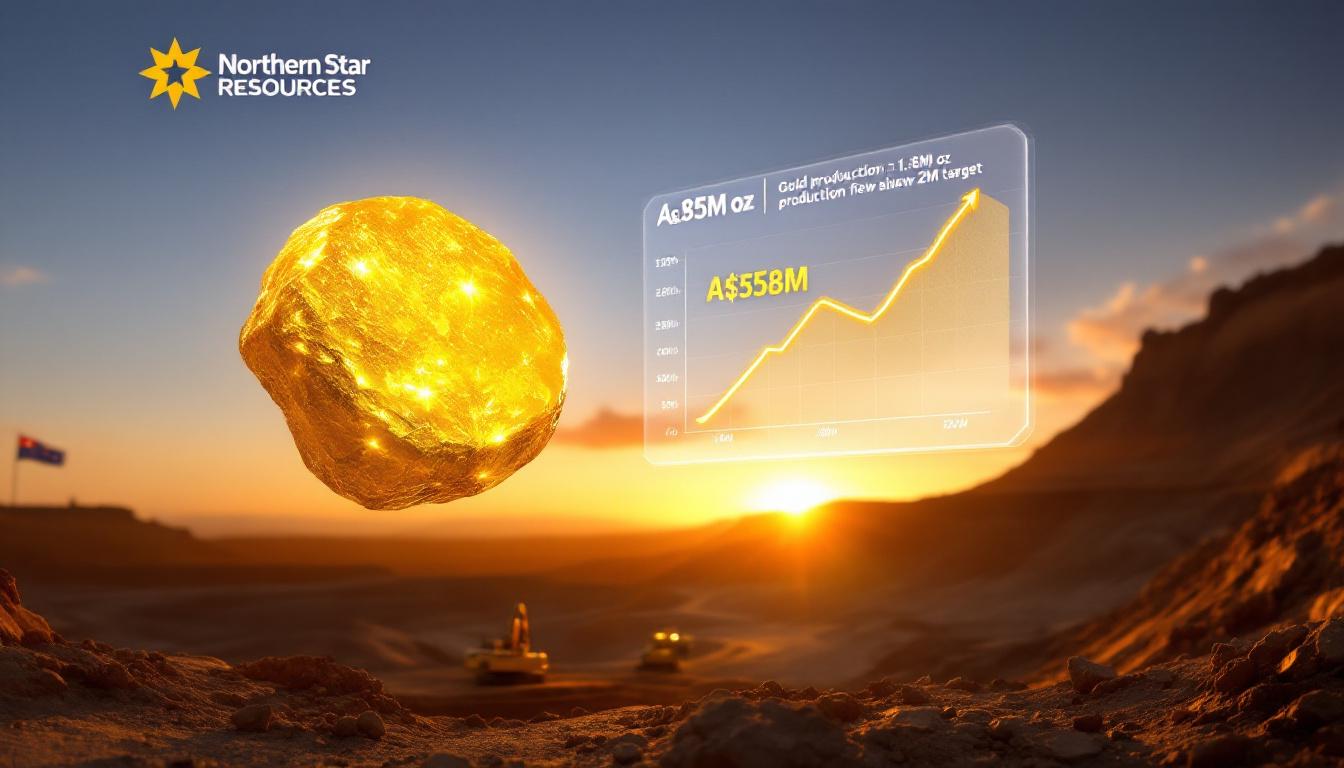Understanding the US-China Propane Trade Collapse
The global propane market is experiencing unprecedented turbulence following the collapse of trade relations between the United States and China. This breakdown represents more than just another casualty in ongoing trade tensions—it has fundamentally reshaped global energy flows and created ripple effects across manufacturing supply chains worldwide. Furthermore, the impact on global commodities insights continues to evolve as markets adjust to this new reality.
The Current Crisis in Propane Markets
US propane prices have plummeted dramatically, falling by 42% in the immediate aftermath of China's implementation of retaliatory tariffs. This precipitous decline reflects the sudden loss of what had been America's second-largest export market for the commodity. Prior to the disruption, approximately 35% of US propane exports—totaling 12 million metric tons annually—were destined for Chinese shores.
"The sudden decoupling has created a buyer's panic in Asia," notes energy markets analyst Serene Cheong. This assessment accurately captures the frantic atmosphere as Chinese importers scramble to secure alternative supplies, often paying significantly inflated prices from other sources.
The price gouging has been particularly severe, with Chinese importers facing a 58% premium for Middle Eastern propane within just two weeks of the tariff implementation. Trading companies with access to non-US supplies have capitalized on this desperation, extracting maximum profit from Chinese buyers with few immediate alternatives.
For US producers, the crisis has triggered a cascade of negative consequences. Storage facilities are rapidly filling, production is being curtailed, and export terminals are operating far below capacity. The situation represents a stark reversal from the profitable trade relationship that had developed over the previous decade.
Historical Context of US-China Propane Trade
Before the current crisis, China stood firmly as the second-largest customer for US propane exports, surpassed only by Japan. This bilateral propane trade grew at a compound annual growth rate of 18% from 2016 to 2023, reaching an impressive $9.8 billion in value during the final year before tariffs disrupted the flow.
The foundation for this trade relationship was established during the American Shale Revolution (2010-2020), which enabled US propane production to grow by an astonishing 300%. This dramatic increase created a surplus that required export markets, with Asia quickly emerging as the primary destination.
From China's perspective, this arrangement proved equally beneficial. The country's rapidly expanding propane dehydrogenation (PDH) plants relied on US supplies for 65% of their feedstock needs. These plants represent critical infrastructure in China's manufacturing economy, converting propane into polypropylene—an essential component in countless consumer and industrial products.
The strategic importance of this trade relationship extended beyond simple commercial interest. It represented a rare area of mutual economic dependency between the two competing powers, with Chinese manufacturing relying on American energy resources in a symbiotic arrangement that has now been severed.
How Do Tariffs Impact the Propane Market?
The mechanics of tariffs on propane trade have significantly altered market dynamics, requiring stakeholders to adapt their navigating geopolitical strategies to maintain commercial viability.
The tariff structure imposed by China includes a punishing 25% ad valorem duty on US-sourced propane, compounded by existing anti-dumping levies. This tax barrier has elevated the total landed costs of US propane to approximately $620 per ton, compared to just $480 per ton for supplies from Middle Eastern sources.
This price differential exceeds the breakeven threshold for profitable trade. Economic analysis indicates that the tariffs have rendered 78% of previously scheduled Q2 2025 shipments economically unfeasible, effectively closing the trade route that had been established over years of market development.
"These tariffs disrupt a decade of carefully built supply chain integrations," remarks commodities reporter Weilun Soon, highlighting the extensive collateral damage beyond immediate price effects. The implementation timeline provided no adjustment period, forcing immediate and disruptive changes to established business practices.
The economic threshold making US propane exports to China non-viable represents a textbook example of how targeted tariffs can completely redirect global trade flows. What makes this case particularly significant is the limited substitutability of the product within its end-use applications, creating acute supply challenges for downstream industries.
Market Reaction to Trade Disruption
The market's response to this disruption has been swift and dramatic. NYMEX propane futures volatility index (CBOE PVF) spiked to 62, surpassing levels seen during the 2020 pandemic. This extreme volatility reflects the market's struggle to price in the fundamental restructuring of global propane flows.
US domestic markets have experienced severe price depression as export volumes plunged. Storage facilities along the US Gulf Coast reached 92% capacity within just three weeks of the tariff implementation, forcing production curtailments across the propane supply chain. This storage constraint represents a physical limitation that compounds price pressures.
Supply chain disruptions for Chinese manufacturers have been equally severe, with reports of factories reducing operations due to input shortages or dramatically higher costs. Algorithmic trading models have exacerbated price swings, with approximately 23% of daily trading volumes attributed to high-frequency systems that amplify market movements.
The transportation sector has not escaped the disruption. Shipping freight rates for US-Asia routes collapsed by 34% due to canceled cargoes, while Middle East-Asia rates surged 27% as Chinese buyers redirected their procurement efforts. This dramatic realignment of shipping patterns demonstrates how quickly global logistics can adapt to trade policy changes.
What Makes Propane Strategically Important?
Propane's Role in Industrial Applications
Propane's strategic significance derives from its versatility and critical position in industrial supply chains. In China, 68% of propane consumption feeds PDH plants that produce polypropylene, the essential feedstock for manufacturing everything from automotive components to medical devices and packaging materials.
The technical efficiency of this process is precisely calibrated: 0.88 tons of propane yields 1 ton of propylene through the dehydrogenation process. This conversion ratio is fundamental to cost calculations throughout the manufacturing sector, making any price increase in the raw material directly impactful to final product costs.
Beyond manufacturing, residential heating accounts for 22% of Chinese propane use, concentrated primarily in northern provinces. This creates seasonal demand patterns that further complicate the supply situation, with winter heating requirements increasing Chinese propane imports by 40% from November through February.
The petrochemical industry represents another critical application, with propane serving as an alternative feedstock for ethylene production when naphtha prices rise. This substitution capability provides flexibility in normal market conditions but becomes problematic when propane supplies are constrained or prices are elevated by artificial barriers.
Supply Chain Dependencies
China's reliance on imported propane for manufacturing has grown steadily over the past decade, with domestic production satisfying less than 30% of demand. This import dependency creates inherent vulnerability to supply disruptions, particularly when concentrated among few source countries.
US production capacity expanded specifically to serve export markets, with dedicated infrastructure including specialized export terminals, refrigerated storage facilities, and VLGCs (Very Large Gas Carriers) for transoceanic shipment. This capital-intensive infrastructure now faces utilization challenges as trade patterns shift.
Storage limitations significantly affect market flexibility, with both exporting and importing regions constrained by physical capacity. In the US, underground caverns provide substantial storage, but these facilities are concentrated in specific geographic regions with appropriate geological formations, creating potential bottlenecks.
Transportation logistics for liquefied petroleum gas between continents involve specialized vessels and loading/unloading facilities that cannot be quickly repurposed or expanded. The average VLGC requires 20-25 days to travel from the US Gulf Coast to Chinese ports, creating a significant lag in supply responses to market signals.
Who Benefits and Loses from the Trade Disruption?
Impact on US Producers and Exporters
The financial impact on US producers has been severe and immediate. Enterprise Products Partners, a major midstream operator, reported a 31% revenue decline in Q2 2025 for its propane segments compared to the previous year. This example illustrates the scale of losses rippling through the industry.
Export infrastructure built specifically for the China trade now operates far below capacity, with 14 US export terminals reduced to approximately 60% utilization. This underutilization threatens the economic viability of assets that require high throughput volumes to cover fixed costs and service debt.
US domestic propane pricing has entered a prolonged depression as supplies that would normally be exported remain within national borders. This creates short-term benefits for domestic consumers but undermines the investment case for future production expansion, potentially creating longer-term supply constraints.
Regional economic impacts are particularly acute in production-heavy areas like Texas, Pennsylvania, and Oklahoma, where propane extraction and processing represent significant employment sectors. Local economies dependent on energy exports face multiplier effects as reduced activity impacts adjacent businesses and tax revenues.
Consequences for Chinese Industries
Chinese manufacturers face substantial cost increases as they pivot to alternative propane sources. Sinopec's Zhenhai refinery, for example, paid a 19% premium for Qatari propane following the tariff implementation, directly increasing production costs by $38 per ton of processed material.
Supply security concerns have prompted strategic stockpiling behaviors, with major Chinese buyers increasing inventory targets and accepting higher carrying costs to mitigate future disruption risks. This represents a rational but expensive adaptation strategy that diverts capital from other productive uses.
Manufacturing slowdowns have become increasingly common, with Guangdong PDH plants operating at just 73% capacity due to feedstock shortages. This production constraint creates downstream supply problems for industries dependent on polypropylene, from textiles to consumer electronics and automotive components.
The adaptation strategies employed by major Chinese buyers include diversifying supplier relationships, investing in storage infrastructure, and exploring technical modifications to accommodate different propane specifications from various source countries. These initiatives require significant capital expenditure and technical expertise.
Alternative Suppliers Gaining Market Share
Middle Eastern producers have emerged as the primary beneficiaries of this trade disruption, stepping aggressively into the supply gap left by US exporters. Qatar, Saudi Arabia, and the UAE have rapidly redirected cargoes to Chinese markets, extracting premium prices while cementing longer-term supply relationships.
The price premiums commanded by non-US suppliers have been substantial, with spot cargoes trading at 20-30% above pre-disruption levels. This windfall has boosted profitability for producers like Qatar Petroleum and Saudi Aramco, enhancing their competitive position in global energy markets.
Long-term contract negotiations now feature prominently in the market, as Chinese buyers seek to secure reliable supply at predictable prices. These contracts typically include destination flexibility clauses and price review mechanisms that were uncommon in previous market conditions, reflecting the heightened risk awareness.
Shipping and logistics adjustments have been necessary to accommodate new trade routes, with vessel repositioning and scheduling modifications creating temporary inefficiencies that further contribute to delivered cost increases. These transitional frictions are expected to gradually resolve as new patterns become established.
What Are the Long-Term Implications?
Structural Changes to Global Propane Markets
The redirection of trade flows appears increasingly likely to become permanent rather than temporary. Investment decisions being made today—from production facilities to shipping assets—assume the continuation of the current fragmented market structure rather than a return to previous patterns.
Infrastructure investments to accommodate new trade flows are already underway, with expanded loading facilities in Qatar and receiving terminals in southern China representing substantial capital commitments. These fixed assets will shape trade patterns for decades, regardless of potential policy changes.
Price discovery mechanisms are evolving in response to the fragmented market, with regional benchmarks gaining prominence over global reference prices. This trend toward localization of pricing contradicts the previous trajectory toward an integrated global market with transparent arbitrage opportunities.
The development of new financial instruments specific to regional propane markets reflects the emerging reality of a permanently altered trade landscape. Trump's market reshaping policies have accelerated this fragmentation, creating distinct trading zones with limited price correlation.
Strategic Responses by Market Participants
Hedging strategies have grown increasingly sophisticated as market participants navigate heightened volatility. Major buyers and sellers are employing complex derivatives structures to manage price risk, with layered approaches that combine physical and financial instruments to achieve desired risk profiles.
Diversification has become the watchword for Chinese importers, with deliberate portfolio approaches to supply sourcing that limit dependency on any single origin country. This strategy requires accepting higher average costs in exchange for reduced concentration risk—a tradeoff deemed worthwhile in the current geopolitical environment.
US producers seek alternative export markets, with increased focus on Mexico, South America, and non-Chinese Asian destinations. This reorientation requires price concessions to stimulate demand growth, investment in market development, and adaptation to different quality specifications and delivery patterns.
Investment in storage capacity represents another strategic response to market volatility, with both exporters and importers expanding their ability to withstand supply disruptions. Underground caverns, refrigerated tanks, and floating storage solutions are all seeing accelerated development despite their significant capital requirements.
How Are Companies Adapting to the New Reality?
Case Studies of Market Adaptation
Leading US exporter Enterprise Products Partners has pivoted toward European markets, reducing shipment sizes to accommodate different terminal constraints and adjusting product specifications to meet regional requirements. This strategic reorientation required substantial commercial and operational adjustments.
Chinese petrochemical giant Sinopec implemented a three-pronged sourcing strategy: increasing Middle Eastern term contracts, developing spot purchase capabilities from diverse suppliers, and accelerating domestic propane production through refinery modifications. This comprehensive approach demonstrates the multifaceted nature of effective adaptation.
Trading companies have assumed expanded roles in facilitating market transitions, with entities like Glencore and Vitol creating structured solutions that combine physical supply, logistics management, and financial risk instruments. These integrated offerings help end-users navigate the complexities of the fragmented market.
New business models are emerging from the disruption, including joint ventures between producers and consumers that vertically integrate the supply chain to reduce exposure to market volatility. These arrangements feature direct investment across borders, creating durable commercial linkages despite geopolitical tensions.
Technology and Innovation Responses
Alternative feedstock development has accelerated among Chinese manufacturers, with research into propane-butane blending technology and naphtha substitution processes receiving increased funding. These technological adaptations aim to reduce dependency on pure propane supplies over the medium term.
Efficiency improvements throughout the propane value chain help mitigate supply constraints, with advanced catalysts in PDH plants reducing input requirements by 5-8%. Similarly, enhanced recovery technologies at gas processing facilities increase propane yield from raw natural gas streams.
Digital trading platforms facilitate new market connections, with blockchain-based solutions improving transparency and reducing counterparty risk in transactions between unfamiliar partners. These technological innovations help overcome the trust deficit inherent in rapidly reconfigured trading relationships.
Logistics innovations for alternative supply routes include multimodal transport solutions combining pipeline, rail, and maritime shipping to access previously uneconomic supply sources. These complex logistical arrangements require sophisticated coordination but unlock supply diversification opportunities, similar to adaptations seen with the global supply chain impact of other restricted commodities.
FAQ: US-China Propane Trade Disruption
What exactly is propane and how is it used?
Propane (C₃H₈) is a three-carbon alkane gas that belongs to the liquefied petroleum gas (LPG) family. At atmospheric conditions, it exists as a gas but liquefies under moderate pressure, making it practical to transport and store. This physical property underscores its utility as an energy carrier.
In industrial applications, propane serves as the primary feedstock for propylene production through the propane dehydrogenation (PDH) process. This conversion produces a key building block for polypropylene plastics used in everything from food packaging to automotive components and medical devices.
Residential and commercial heating represents another major use case, particularly in areas without natural gas pipeline infrastructure. Propane's high energy density and clean-burning characteristics make it an effective heating solution in both developed and developing markets.
In the hierarchy of petroleum products, propane occupies a middle position—more valuable than natural gas but less valuable than gasoline or diesel. This positioning makes it particularly susceptible to market disruptions when higher-value products drive refinery production decisions.
How significant was the US-China propane trade before the disruption?
The bilateral propane trade between the US and China had grown to approximately 12 million metric tons annually before the disruption, representing roughly 35% of total US propane exports. In monetary terms, this trade flow exceeded $9.8 billion in 2023, highlighting its economic significance.
For context, US propane exports to China had grown at a compound annual rate of 18% from 2016 to 2023, far outpacing overall energy trade growth between the countries. This accelerated growth reflected both China's expanding petrochemical sector and the US shale production boom.
The importance to Chinese manufacturing supply chains cannot be overstated. Approximately 65% of the feedstock for China's PDH capacity came from US sources, creating a direct link between American energy resources and Chinese industrial output that has now been severed.
Historical trends had suggested continuing growth in this trade relationship, with planned capacity expansions on both sides predicated on the assumption of stable bilateral flow. Investment decisions made on this basis now face challenging economic realities as alternative arrangements prove more costly.
What alternative sources can China tap for propane supplies?
Middle Eastern producers represent the most immediate alternative supply source, with Qatar, Saudi Arabia, and the UAE possessing significant export capacity. These countries collectively can provide approximately 38 million tons annually to global markets, though much
Ready to Spot the Next Big Mineral Discovery?
Discovery Alert's proprietary Discovery IQ model instantly notifies investors of significant ASX mineral discoveries, transforming complex data into actionable insights for both short-term traders and long-term investors. Visit our discoveries page to understand why historic mineral discoveries can generate substantial returns, and begin your 30-day free trial today.




